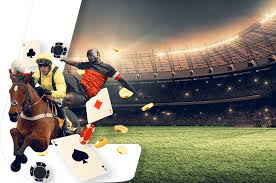
From Casual Gaming to Competitive: The Evolution of Play
In recent years, the gaming landscape has undergone a significant transformation, moving from casual play experiences to a highly competitive environment where skill and strategy reign supreme. Players who once indulged in simple mobile games or enjoyed RPGs with friends are now vying for glory in eSports tournaments and international competitions. This article delves into the multifaceted journey of gaming, exploring how casual gaming has paved the way for competitive play, and what this shift means for players and the industry alike. For instance, many players engage with platforms that enhance their gaming experience, such as From casual gaming to competitive betandreas login.
The Rise of Casual Gaming
Casual gaming has opened the doors to millions of players worldwide. Games such as “Candy Crush,” “Angry Birds,” and “Among Us” have attracted diverse audiences, including those who may not consider themselves gamers. These titles are designed for easy access and quick play sessions, allowing individuals to engage without the steep learning curve often associated with traditional video games. The proliferation of smartphones has significantly contributed to this phenomenon, allowing anyone with a mobile device to play games anytime and anywhere.
Transition to Competitive Gaming
With the rise of casual gaming, certain titles began to foster competitive elements. Games like “Fortnite,” “League of Legends,” and “Overwatch” transitioned from casual fun to serious competitions with organized tournaments and leagues. As more players sought to improve their skills, the community around these games grew rapidly. Streaming platforms like Twitch amplified this trend, providing a venue for players to showcase their skills while fans cheered them on, fostering a vibrant competitive scene.
The Role of eSports
The competitive gaming scene has been formalized through the establishment of eSports – a phenomenon that has transformed how gaming is perceived and experienced. eSports encapsulate competitive gaming at the highest level, where players and teams compete for substantial prizes, often in front of large audiences. Tournaments such as “The International” for “Dota 2” and the “League of Legends World Championship” draw millions of viewers and have sponsorship deals worth millions. As a result, professional players have emerged as influencers and celebrities within the gaming culture, further enhancing the appeal of competitive gaming.
The Impact on Players
The transition from casual to competitive gaming has drastically changed the expectations placed upon players. Individuals are now investing considerable time in honing their skills, strategizing gameplay, and analyzing opponents. This competitive mindset encourages discipline, teamwork, and a deep understanding of game mechanics. Additionally, the mental and emotional challenges of competition can lead to tension and stress, prompting discussions about mental health in the gaming community.

Community and Collaboration
Another significant impact of competitive gaming is the strengthened sense of community. Players gather to celebrate victories, analyze defeats, and collaborate on strategies. Online forums, Discord servers, and social media platforms serve as hubs for interaction, where players can share experiences, tips, and support. This community aspect can be beneficial for casual players who wish to transition into the competitive realm, providing a network of support and resources.
Game Development and Innovation
The rise of competitive gaming has also influenced game development. Developers are increasingly focusing on creating balanced gameplay, robust matchmaking systems, and continuous updates to enhance user engagement. Designers are paying closer attention to the competitive viability of their games, often conducting extensive testing and gathering feedback from both casual and professional players to create a more engaging experience.
Barriers to Entry
Despite the growth of competitive gaming, barriers still exist. Not all players have access to top-tier hardware or high-speed internet, which can hinder their ability to compete effectively. Additionally, the pressure to perform can discourage new players from entering the scene. Addressing these issues requires a concerted effort from developers, platforms, and the gaming community to create a more inclusive environment.
The Future of Gaming
The future of gaming seems bright as casual gaming continues to evolve and merge with competitive elements. The increasing recognition of gaming as a legitimate form of entertainment and sport will drive further innovation and engagement. As technology progresses, we can expect the emergence of new genres and styles of play that blend casual and competitive experiences, encouraging a broader audience to participate in the gaming ecosystem.
Conclusion
From casual gaming to the intense world of competitive eSports, the journey represents not just a shift in play style but a fundamental change in how games are experienced and perceived. As the lines between casual and competitive blur, the gaming community continues to grow, thrive, and adapt, fostering a new era of play where anyone can join in the fun, whether they seek a leisurely escape or a competitive challenge. Ultimately, the evolution of gaming is a testament to the enduring appeal of play and the endless possibilities that come with it.
